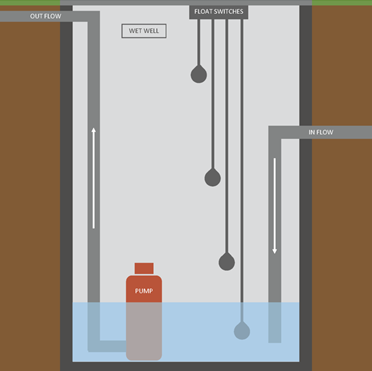Give Your Station a Lift
A wastewater lift station is a pumping station that moves wastewater from a lower elevation to a higher elevation. The benefit of using a lift station in a wastewater collection system is that it saves a substantial amount of money in excavation costs, which involves digging for sewer pipes – sewer pipes live underground, and digging trenches is costly. Installing a wastewater lift station at certain points in a gravity pipeline system saves on front-end construction costs without sacrificing efficiency or functionality. They play an integral role in moving wastewater to a treatment plant.

Maintaining your lift station is the first step in helping local watersheds and communities. If a lift station at your facility were to fail the result could cause hours of downtime, expensive repairs and health risks to due to the lack of properly functioning wastewater facilities.
If you’re responsible for maintaining one-or-more lift station assets, it’s important to pay attention to the following:
Speed. A lift station's drainage speed is an initial indicator your pump requires maintenance. Over time, debris can accumulate within drains and pipes, slowing drainage. A minor clog may go unnoticed initially, but will slowly decrease the functionality of the system without routine maintenance. If a severe backup develops, it could lead to reduced draining times or complete system failure. Monitoring your lift station's drainage speed will help ensure proper system functionality.
Odor. If there’s a pungent smell from your lift station, maintenance is required. Systems should not have a noticeable smell emanating from pipes or sumps. Not only is a smell undesirable, but it could also suggest debris accumulation, possible clogging or an early warning sign of future system failure.
Buzz. A buzz or humming noise during operation could indicate a clog, worn valves or unintended pressure. These factors add stress to your lift station and can cause more significant issues if unaddressed. If a system continues to operate under high stress, costly repairs are more likely as valves, pipes and other components begin to wear.
Alarm. An audible alarm paired with flashing lights is the most obvious indicator that your lift station requires servicing. The alarm is triggered when water levels within the sump begin to rise at an unmanageable rate because of a partial or complete system failure. If a lift station can’t pump out water faster than the sump is filling, overflow is inevitable without repairs.
If you’re experiencing any of the x4 warning signs above, request a quote today! LES can service any lift station, nationwide.
